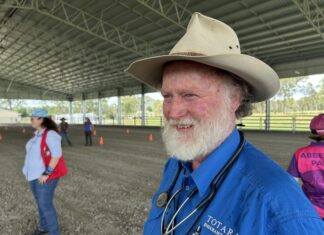You might have thought that things were getting busier, as Australia emerges from the Covid-19 induced fog of the past few years – and you would be right.
New figures released by the Australian Bureau of Statistics give some insight into where all that busy-ness is coming from.
A large part is due to the recovery in the number of people arriving from overseas. In the year ending June 2022, nearly 171,000 more people arrived in Australia from overseas than the much smaller number who left.
This addition to our population is considerably higher than in 2021 when, in the grip of the pandemic, 85,000 more people left Australia than the very small number that arrived here.
Of course, the number of arrivals to Australia has a long way to go to reach the highs of the 2000s or even the pre-pandemic years of 2019 and 2020 when overseas migrants added between 200,000-250,000 people to Australia’s population respectively.
This, in part, explains why there are few workers for food and hospitality jobs, jobs that have traditionally been filled by backpackers or overseas students. Although, these numbers suggest a return is underway.
But what exactly is happening in Queensland?
In 2020, in the early days of Covid-19, Queensland grew by just over 80,000 people but by 2021, growth slumped to less than 43,000 largely due to the nearly 13,000 people who left Queensland to return overseas as their visas ran out or they returned home.
However, in 2022, Queensland’s population was again supplemented from overseas migration with almost 23,500 more people arriving from overseas than those who left.
This helped Queensland record the third highest annual growth of the past 40 years of over 104,000 people over the 12 months ending June 2022. This population growth was well ahead of Victoria (nearly 66,000) and NSW (nearly 60,000) with Queensland also getting the gong for the fastest growing state or territory in Australia.
As a result, Queensland’s population topped 5.3 million at the end of June this year. While this is still behind the two big states of NSW (8.2 million) and Victoria (6.6 million), Queensland’s population was about the same as the remaining states of South Australia, Western Australia and Tasmania combined (5.2 million).
The two territories together were home to only 700,000 people.
So, are there really people flooding to Queensland from NSW and Victoria?
The short answer is yes. Over the past few years, Queensland has been the destination of choice for many escaping lockdowns and high numbers of Covid cases in the southern states. In 2022, Queensland recorded a net gain of more than 55,000 people from other states and territories. This is the highest number for the past 40 years.
But, when you’re looking at these numbers, it’s important to remember that some people move to Queensland, and others move away. So, there’s a lot of churning of people moving here, there and everywhere else.
Lots of people follow work, some move to be able to buy an affordable home, others move to start university or to retire. There are many different reasons that people move.
However, it’s undeniable that Queensland is currently the hot destination for people deciding to move within Australia.
In 2019 before the pandemic, 108,000 people moved to Queensland. In 2020, there were slightly fewer arrivals, but by 2021, there were almost 110,000 people who decided to move to Queensland from other parts of Australia. Queensland was perceived as an attractive place to live out the Covid years. This is also supported by the smaller number of people who left Queensland for interstate locations in 2020 and 2021.
But in 2022, something shifted.
Queensland recorded a record number of interstate arrivals with over 142,000 people moving here.
While the number of people leaving Queensland (perhaps some of those earlier arrivals) also increased, the total result of all this movement was the biggest net contribution from interstate migration to Queensland’s population in 40 years (over 55,000 people).
If, as is expected, overseas arrivals to Australia continue to increase closer to pre-pandemic levels, Queensland’s population will swell even further. And those places that are popular and sought after destinations – like Noosa, will feel the pressure of the demand from that growth.
How will we respond?








